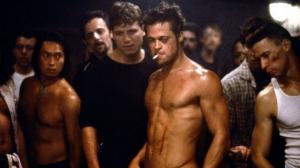The metamorphosis of Franz Kafka: summary and analysis
Metamorphosis is a narrative authored by Franz Kafka, published in 1915, which tells the story of the transformation of Gregorio Samsa in a monstrous insect, and of the family drama that, as a result of this event, is unleashed.
Its original title in German is Die Verwandlung, which could be translated as 'the transformation'. However, in Spanish it has been chosen to designate it as 'metamorphosis', a word that has an associated mythical component.
In this story we wanted to see a allegory of man's confrontation with a modern world that oppresses and erases him.
For his part, the transformation of Gregorio into what is presumably a beetle, which is a fantastic, extraordinary event, inaugurates the literature of the absurd, which in subsequent decades will influence numerous established writers.

Summary of the work
Metamorphosis is a story divided into three parts, where the transformation of Gregorio Samsa, a traveling salesman from fabrics, into a monstrous insect, and the impact this event will have not only on his life, but on that of his family.
First part
The story begins with the awakening of Gregorio Samsa, a commercial in charge of financially supporting his entire family.
The protagonist wakes up with the feeling of having had an uneasy dream. Little by little, he discovers his transformation into an insect: his innumerable legs, his bulging abdomen, the shell that replaces his back, his new and strong jaws.
Despite the seriousness of the situation, Gregorio's first concern is to justify his state at work.
A manager of the warehouses where Gregorio works decides to go look for him at his house due to his unusual delay. The protagonist makes a great effort to open the door and, then, his family notices his new form: that of a huge beetle.
Second part
At first, the protagonist's relatives do not know how to cope with the new situation. His father gets angry and despises him. However, his sister Grete, who has great affection for Gregorio, takes pity on him and takes care of feeding and caring for him.
After cleaning his room for a while, his sister begins to disown him.
On another occasion, his mother faints upon seeing him. Then his father blames the beetle for what happened and throws apples at him to shoot him.
Third part
The family economy is threatened due to the state of Gregorio. So its members have to make some adjustments: cut household expenses, reduce the maid's working day, and rent one of the rooms to new tenants.
The situation with the tenants generates conflicts in the home. Well, these are very demanding with cleaning and the family will try to keep Gregorio a secret.
One night, Grete plays the violin for the guests and Gregorio, who loves his music, decides to go to the living room. Soon, the insect is discovered by the tenants, who end up leaving the house without paying for their stay.
After this fact, the family understands that Gregorio's situation is untenable. The protagonist also believes this, so he decides to lock himself permanently in his room without feeding. Days later, the maid finds him dead.
Analysis
To understand Kafka's account, it is important to look at its historical context.
The reading of the work assumes different interpretations. Issues such as identity and loneliness, among others, can be guessed from its content.
Also, some details have a certain similarity to the author's life.
Context
The work was published in 1915, at the beginning of the First World War (1914-1918), and the Russian Revolution was very close.
A time that was marked by social, political and economic conflicts in which modern man faces different changes. In addition, dilemmas related to individualism arise in an increasingly dehumanized modern world.
Topics
Identity
The protagonist becomes an insect and at the same time, in this transformation process, his identity is gradually blurred. That is, it changes as its physical singularities do.
His condition as an insect prevents him from financially supporting his family, who reject him.
Thus, Gregorio loses importance the moment he is dependent and is discovered as a "useless" piece, a burden for his parents and his sister.
Relationships and selfishness
How important are we to the people around us? There is a phrase that affirms that we must "be for the good and for the bad."
Franz Kafka raises the importance of the protagonist in his family environment when he cannot respond to his “obligations” at work.
Thus, Gregorio as an economic supporter and worker is loved and respected by them. However, the moment the “misfortune” happens to him, he is disowned, first by his father and, later, by his mother and his sister.
At that moment the protagonist is reduced to oblivion and his family members demonstrate his selfish attitude, since they only see Gregorio as a "supportive entity".
Authority
The story shows the submission of the individual to an authoritarian power that disintegrates him.
In this sense, superiority is reflected in the protagonist's boss, who dares to humiliate him and criticizes his way of working.
Likewise, Mr. Samsa also exercises authority over his family and especially his son.
Guilt and frustration
The sense of responsibility that Gregorio has with his family makes him feel guilty the moment he undergoes his transformation.
From his metamorphosis and, consequently, the loss of his job, the feeling of frustration appears in the protagonist. Gregorio feels that he has become a burden on his parents and his sister when financial difficulties appear.
As the story progresses, Gregorio concludes that he is better off dead than alive and abandons himself. That is, the feeling of guilt and frustration drive it to an end.
Loneliness and isolation
The protagonist's life is reduced to the fact of working, without worrying about himself, but about others.
On the other hand, Gregorio lives surrounded by people but, nevertheless, he is completely alone. He has no friends, no relationships, no good co-workers.
The protagonist is aware of this loneliness when he undergoes the transformation, at which time he, due to to the rejection of those closest to him, he decides to isolate himself and considers death as the only solution possible.
Parallelism with Kafka
In this story we have wanted to see biographical parallels with Kafka, especially in relation to his conflictive relationship with his father.
Such similarities can be found in Letter to father (1919), a writing in which Kafka addresses his father and reveals the abusive and tyrannical behavior of his father towards him. This fact can also be seen reflected in the threat that Mr. Samsa poses to his son in this narrative.
He may also interest you: 25 short novels to read.
Metamorphosis Characters
Main
Gregory samsa
He is a young traveling salesman who works to support his family financially and pay the debts of his father, whose business went bankrupt.
One day, Gregorio wakes up transformed into a huge insect, presumably a beetle. Soon, the protagonist is despised and rejected by his family, so he decides to live in isolation in his room.
Grete samsa
She is Gregorio's younger sister and the person for whom he cares the most. The young woman is in charge of taking care of her brother when he turns into a beetle. She feeds him and removes furniture from the room to facilitate movement.
Grete plays the violin and Gregorio laments her for not having transmitted her wish that he study at the conservatory.
When her brother transforms into an insect, she is forced to work. Finally, the girl despises Gregorio and pretends to let him die.
Lord samsa
He is the father of Gregorio. She has outstanding debts since the bankruptcy of her business, which her son has to settle with his work as a traveling salesman.
Due to her age, Mr. Samsa cannot work. However, when her son turns into an insect she has to find a job to support her family.
She maintains a strained relationship with Gregorio, whom he attacks and despises.
Lady Samsa
She is Gregorio's mother. He suffers from asthma, which prevents him from making great efforts and working. As a result of Gregorio's transformation, Mrs. Samsa is forced to work sewing and mending clothes.
Although she loves her son, she is terrified by her insect-like appearance and she faints every time she sees him.
Secondary
Manager
He is Gregorio's boss. He is superb and strict. When he becomes aware of Gregorio's absence, he decides to go to his house to brand him as irresponsible.
Seeing the transformation of her employee into an insect, she freaks out and runs away from the Samsa family home.
Maids
They are three women who collaborate with the family's household chores. One of them is pending the condition of Gregorio. However, another decides not to leave the kitchen so as not to meet the insect.
Tenants
They are three guests who stay in the family home when Gregorio stops bringing money home. So the owners decide to rent a room to improve his financial situation.
In the end, the tenants leave the house in fear of the insect.
About the author: Franz Kafka

Franz Kafka was an author of Jewish origin, born in Prague in 1883, who wrote in the German language.
His particular literary work was characterized by the absurdity of the situations posed, the labyrinthine power structures, and its suffocating atmospheres, all of which has given rise to the term Kafkaesque, which refers precisely to authors whose works have been influenced by Kafka and who have the characteristics cited.
Metamorphosis, published in 1915, is his most celebrated work. Likewise, Kafka is the author of other important, albeit unfinished, novels, such as The process, America or The castle.
In 1924 Kafka died in Austria from illness.
If you like this article, you may also be interested in: Franz kafka



